Types of wood glue and features of its use
To firmly connect wood products and wood-based materials - wood boards, hardboard, cardboard - wood glue is used. Protein plays the main role - it is what determines strong bonding. The connection is very strong. With the gradual destruction of the structure, it is clear that it is not the adhesive layer that is modified, but the adjacent layers of wood. This glue has a natural base and does not emit harmful substances, so its use is completely safe even in children's rooms.
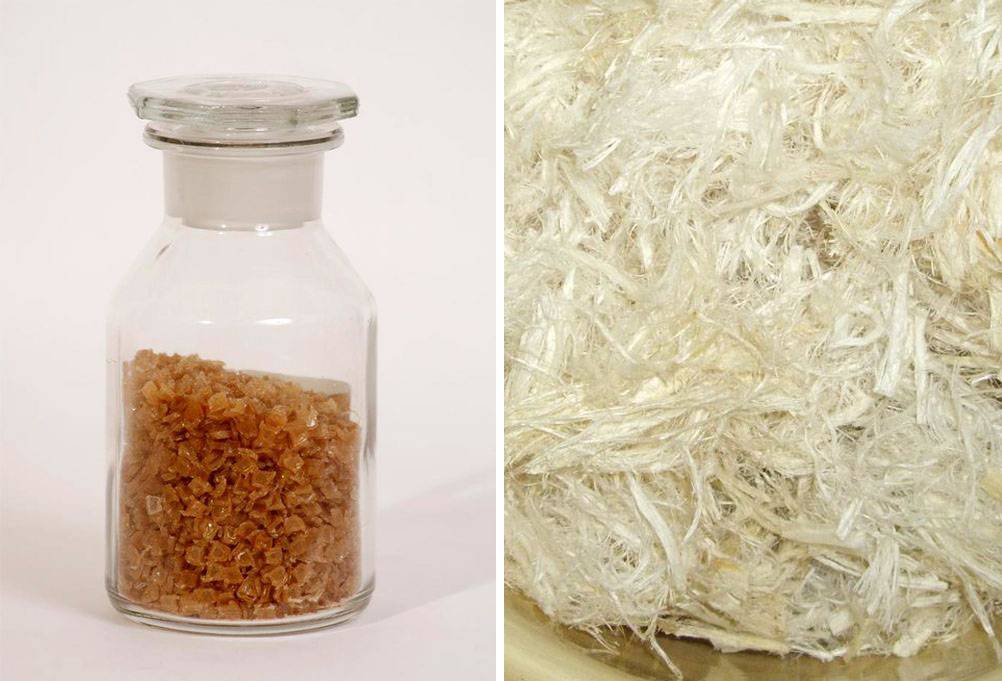
Types of wood glue
Organic raw materials are used to make glue. Depending on their origin, the following types are distinguished:
- bone;
- fleshy;
- fishy
Bone wood glue is the most common. It is obtained from the bones and bone waste of animals. Pellets made from horns are especially prized. Bone glue contains gelatin, collagen and cysteine. All of them have excellent viscosity and allow you to firmly glue wooden products. Bone glue is usually sold in granular form.
Hide glue is made from waste from the leather industry. Basically, this is mezdra - a layer of subcutaneous tissue that is cut off when tanning hides. Leather scraps are also used. All of them contain oligopeptides with adhesive properties. Hide glue is available in the form of tiles, flakes, and powder.
Fish glue is prepared from fish scraps: bones, heads, scales, entrails, fins. This glue is considered the highest quality, so it is the most expensive.It is used in the restoration of antique products, as a basis for icon painting, and for other works that require the highest quality. Fish glue can be used to glue both homogeneous and dissimilar surfaces. It is produced in the form of granules or flakes.
PVA
PVA glue stands apart. It is completely synthetic. It is based on a substance called polyvinyl acetate. But PVA is safe, like its protein counterparts. It is even approved for use in educational institutions for children's creativity. PVA is also actively used for carpentry and construction work. It does an excellent job of joining wood products, cardboard, and wood boards.
Advantages of PVA glue:
- elasticity;
- moisture resistance;
- reliability of surface adhesion;
- transparency when drying;
- affordable price;
- Sold as a ready-to-use mass.
Cooking features
Wood glue is sold dry. Most often these are small yellow-brown granules. Sometimes you can find glue in tiles. Quality can be determined by appearance: the lighter and more transparent the granules, the better the glue.
Before using the glue, it is important to prepare it correctly. If you bought tiles, they need to be crushed. To do this, wrap it in cloth and break it with a hammer until it becomes crumbs.
The preparation of glue is divided into two stages.
- Soak. Fill the granules or crumbs with cold water. It must first be boiled, since the salts contained in the “raw” water will negatively affect the quality of the finished mass. The liquid should completely cover all the granules. You need to soak the glue until it becomes soft and gelatinous. Soaking lasts from 4 to 12 hours, depending on the number of granules.
- Cooking. After swelling, the glue should be boiled for about 15 minutes in a water bath. Maintain temperature between 60 and 80 degrees. The result should be a homogeneous, lump-free liquid. Do not heat the mass over an open fire or bring it to a boil - the protein from which the granules are made will begin to deteriorate and the adhesive ability will decrease. When a thin film forms on the surface, the adhesive mass is ready.
Readiness for gluing can be checked in another way. Raise the stick used to stir the substance above the surface. If the liquid drips from it in separate drops, you need to cook more. If it flows in a continuous stream, the glue is ready.
There is a special device for cooking wood glue - a glue gun. It consists of two vessels of different sizes inserted into one another. Water is poured into a large container, and swollen wood glue is poured into a smaller container. Then the small vessel is placed inside the large one, and this, in turn, is placed on the fire. The best material for making glue is copper.
Advice
You can make your own oilcloth by taking two containers of different sizes. For example, a large tin can will serve as the outer vessel. And the inner one will be a small tin can attached to a wire.
How to improve the properties of glue?
To improve some properties, you can add some other substances at the preparation stage - the adhesive mass will become more versatile. It can be used to connect not only wooden, but also other surfaces.
- Drying oil. Add 10 g of linseed oil or natural drying oil to 40 g of granules. This will increase the moisture resistance of the adhesive joint.
- Glycerol. Add it at the rate of two teaspoons per liter of finished glue.Glycerin is added if the skin needs to be glued together.
- Wood ash, chalk powder. Sift one of the two powdery masses and add to the finished glue. The result is an excellent putty paste.
- Ammonia, borax, phenol. These additives are antiseptics and will protect the seam from mold.
Useful tips
Protein-based glue has its own characteristics. Those who use it for the first time do not always know them. Below are some tips to make using this material easier.
- To maintain the desired consistency, you need to add hot boiled water (if you want to make the mass more liquid) or increase the cooking time (if you want a thicker mass).
- The ideal operating temperature is from 30 to 70 degrees. In an oilcloth at an ambient temperature of about 25 0The glue remains suitable for two hours. When the adhesive becomes too cold, it thickens and the adhesive properties are reduced.
- Ready-made wood glue cannot be stored. Therefore, you will have to soak and cook exactly as many granules as necessary for the current work. Already on the second day, the ability to bond becomes significantly lower. And after three days, mold is likely to appear. Since the basis is protein raw materials, rotting and decomposition, accompanied by a characteristic odor, is possible.
- The thickness of the adhesive layer should not exceed 0.2 mm.
There is also casein glue. It consists of kerosene, sodium fluoride, casein, copper sulfate and slaked lime. This type is rarely used because it is poorly stored and, when dried, significantly decreases in volume and changes color.
Terms of use
The procedure for working with wood glue is somewhat different from using its synthetic analogues (for example, PVA, which is also intended for gluing wood and cardboard).
- Prepare the adhesive mass according to the above algorithm. Monitor the temperature.
- Make sure that the parts to be glued are dry. The permissible humidity of wood products is no more than 10%. The maximum moisture content of veneer should not exceed 5%.
- Using a bristle or bast brush, apply the adhesive mixture evenly to both surfaces. The total thickness of the seam should be no more than 0.1–0.2 mm.
- Wait 2-5 minutes for the glue to dry slightly and cool. This way it will be squeezed out less when connecting parts.
- After connecting the two surfaces, lightly rub them together.
- Tie the glued parts tightly with twine or compress them with a clamp.
- You can use the glued item after six hours.
When gluing the ends, the glue can be applied in two layers. Be sure to let the first coat dry before reapplying.
How to choose wood glue?
When choosing wood glue, be guided by the following criteria.
- Color and transparency. The lighter and more transparent the granules or tiles, the better the adhesive.
- Type of glue. It directly depends on the type of work. The best and most expensive is fish. It is used for delicate and restoration work, where the highest demands are placed on quality. For ordinary repairs, bone or flesh repair is suitable.
The advantage of all of the above types of wood glue is their absolute safety. For construction needs, it is better to use bone, flesh glue or PVA. They provide strong bonding and are affordable. For delicate work and restoration, glue made from fish raw materials is ideal.And the above tips for preparation and use will help you quickly and effectively cope with the task.

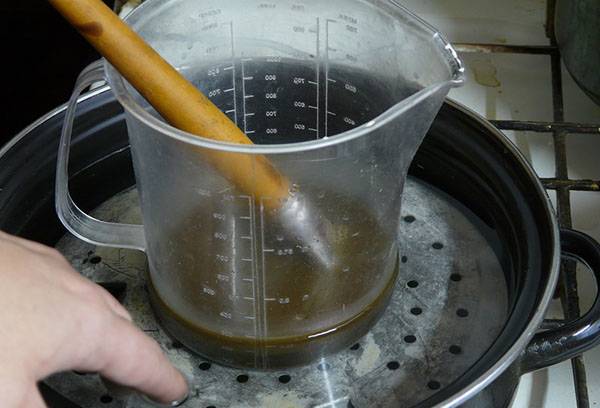
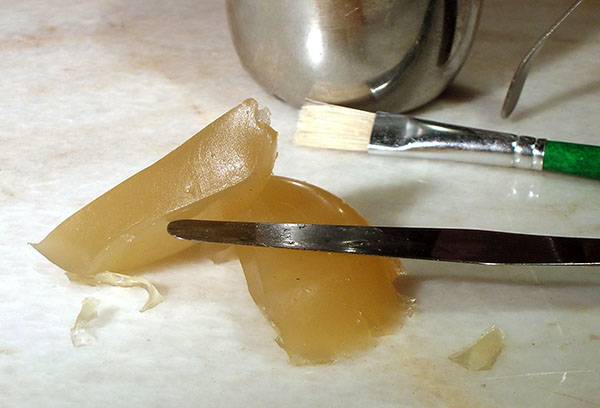
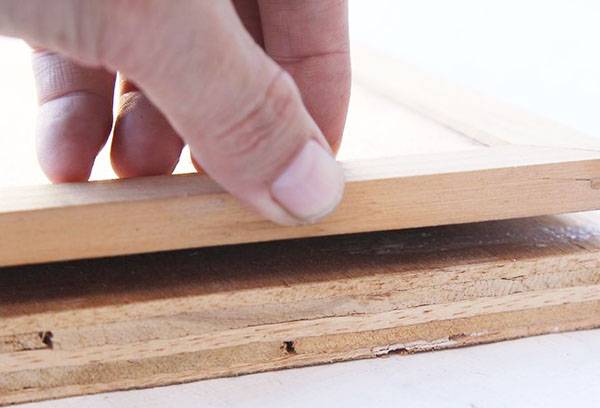

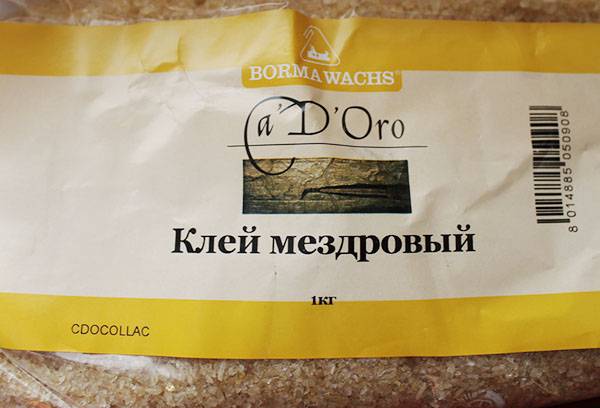
I glued the chair with casein glue and it still rocks. Bone glue made it strong.